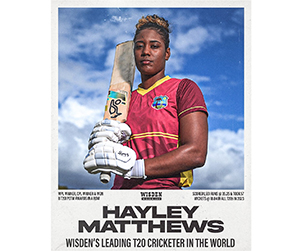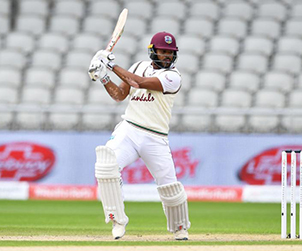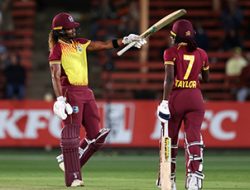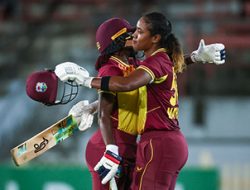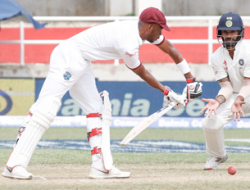Let me quickly reflect on my last two articles. The earlier article related to the bowler performances across the years. It was a very important analysis based on historic data. There were over 120 comments. The more important article was the recent one: on the boundary-scoring pattern changes. A momentous bat size change law is recommended by MCC, partly based on this data I have provided.
There were only 21 comments and I wondered why. I realised that the latter article was primarily on pattern changes across the years. It was almost completely raw data. The law change, if it comes about, would change the game significantly but the players would adapt, as would the followers. There was nothing personal or interesting. On the other hand, readers identified with many of the bowlers and in good humour engaged in jousts with others. They were ready to fight on for their players’ cause. And the comments were incisive and sought a lot more data.
Based on the comments received, I have made this article a complete exposition of bowlers’ awayperformances. The article will move top down in a hierarchical manner: the career, regions, countries, series and finally Tests.
First, the away career figures of leading bowlers. In order to add weight to the analysis, most of my analysis will relate to players who have captured 100 away wickets or more. I understand that this is a tough qualification bar. As many as 63 bowlers qualify. However, it is essential to add weight to the analysis. A few people like Fred Titmus (99), Craig McDermott (98), Heath Streak (96), Sarfraz Nawaz (96) and Mohammad Asif (96) miss out. But this will happen whatever be the limit. Just for information, UAE is treated as “Away” for both teams.
The first table is a straightforward one. This table is ordered on the away wickets captured by the bowlers.
| Bowler | Team | Tests | Wickets | Avge | Home Wkts | Avge | Away Wkts | Avge |
| SK Warne | AUS | 145 | 708 | 25.42 | 319 | 26.39 | 389 | 24.61 |
| M Muralitharan | SLK | 133 | 800 | 22.73 | 493 | 19.57 | 307 | 27.80 |
| CA Walsh | WIN | 132 | 519 | 24.44 | 229 | 23.69 | 290 | 25.03 |
| GD McGrath | AUS | 124 | 563 | 21.64 | 289 | 22.43 | 274 | 20.81 |
| A Kumble | IND | 132 | 619 | 29.65 | 350 | 24.88 | 269 | 35.86 |
| Wasim Akram | PAK | 104 | 414 | 23.62 | 154 | 22.23 | 260 | 24.45 |
| RJ Hadlee | NZL | 86 | 431 | 22.30 | 201 | 22.96 | 230 | 21.72 |
| MD Marshall | WIN | 81 | 376 | 20.95 | 157 | 20.06 | 219 | 21.58 |
| Kapil Dev | IND | 131 | 434 | 29.65 | 219 | 26.50 | 215 | 32.86 |
| Waqar Younis | PAK | 87 | 373 | 23.56 | 162 | 20.30 | 211 | 26.07 |
| Z Khan | IND | 92 | 311 | 32.95 | 104 | 35.88 | 207 | 31.48 |
| DL Vettori | NZL | 113 | 362 | 34.37 | 159 | 37.11 | 203 | 32.22 |
| CEL Ambrose | WIN | 98 | 405 | 20.99 | 203 | 21.19 | 202 | 20.79 |
The table is on expected lines. The more wickets a bowler takes the more away wickets he is likely to take. The top five wicket-takers occupy the top five positions in this table, albeit not in the same order. As expected, Shane Warne was marginally more successful away than at home. It is also a measure of the away Tests played by Australia during their halcyon years. Despite his capturing nearly 100 wickets fewer than Muttiah Muralitharan, he has captured nearly 100 away wickets more. Warne has captured more away wickets than Ian Botham, Malcolm Marshall and Waqar Younis captured in their entire careers.
Murali is second with 307 wickets, at a good average. Courtney Walsh pips both Glenn McGrath and Anil Kumble. Wasim Akram comes in next with a huge number of away wickets. The presence of Kapil Dev, Daniel Vettori and Zaheer Khan in the top 12 is understandable since their home pitches were not great for them. Curtly Ambrose rounds off the list of 12 bowlers who have captured 200 or more away wickets.
A moment to reflect. Placed at 17th is Saeed Ajmal. He has taken 178 Test wickets, all away and not a single wicket at home. My heart goes out to the current generation of Pakistan cricketers. How I wish that the Nos. 1 and 2 in the ICC rankings play a three-Test series in Australia or England. While on the subject, while I would have been very happy to see India at the top of the ICC Test rankings, I am equally happy to see Pakistan at No. 1. The reasons: two players, whose combined age is around 80. Both are tremendous cricketers and great human beings. And rather than thanking West Indies cricketers and the Trinidadian rain gods, Pakistan would do well to thank Sri Lanka, in general, and Rangana Herath and Kusal Mendis, in particular.
| Bowler | Team | Tests | Wickets | Avge | Away Wkts | Avge |
| SF Barnes | ENG | 27 | 189 | 16.43 | 126 | 17.96 |
| J Garner | WIN | 58 | 259 | 20.98 | 136 | 19.74 |
| AK Davidson | AUS | 44 | 186 | 20.53 | 102 | 20.11 |
| CEL Ambrose | WIN | 98 | 405 | 20.99 | 202 | 20.79 |
| GD McGrath | AUS | 124 | 563 | 21.64 | 274 | 20.81 |
| MD Marshall | WIN | 81 | 376 | 20.95 | 219 | 21.58 |
| RJ Hadlee | NZL | 86 | 431 | 22.30 | 230 | 21.72 |
| AA Donald | SAF | 72 | 330 | 22.25 | 153 | 22.96 |
| MA Holding | WIN | 60 | 249 | 23.69 | 163 | 23.65 |
| CV Grimmett | AUS | 37 | 216 | 24.22 | 111 | 23.86 |
| AME Roberts | WIN | 47 | 202 | 25.61 | 130 | 23.88 |
| RR Lindwall | AUS | 61 | 228 | 23.03 | 116 | 23.96 |
| DW Steyn | SAF | 84 | 416 | 22.24 | 175 | 24.02 |
| DK Lillee | AUS | 70 | 355 | 23.92 | 124 | 24.28 |
| ————— | ||||||
| I Sharma | IND | 71 | 208 | 36.86 | 145 | 37.77 |
| Harbhajan Singh | IND | 103 | 417 | 32.46 | 152 | 38.90 |
| HMRKB Herath | SLK | 73 | 332 | 28.72 | 101 | 41.46 |
Now we come to the first performance-based measure: the bowling average. This table lists the top bowlers ordered on bowling average. Sydney Barnes leads the list, having taken 126 wickets at 17.96. The readers should realise that 1905-1914 was a different period to 1890-1899. A lot of these wickets were taken against South Africa. However this South African team was a much better team with the infusion of better players.
The unheralded Joel Garner follows next. He was excellent away from home and the 136 wickets at a sub-20 average reflects this. He is followed by the left-armer Alan Davidson, who was successful in varied regions, like India and South Africa. He just managed to vault the bar and finished with 100 wickets at an average around 20.
Now it is the turn of six of the greatest pace bowlers the world has ever seen. Ambrose was the king in Australia and England. He is one of the top bowlers who performed almost at the same level whether at home or away. Over 200 wickets at an average just over 20 is a testament to this fact. McGrath was the master everywhere, as was Marshall. They both took over 200 away wickets at averages either side of 21.0. Richard Hadlee, Allan Donald and Michael Holding follow next. The top ten is completed by Clarrie Grimmett.
Look at the next four bowlers. At the other end of the table we have Herath conceding well over 41 runs a wicket and Harbhajan Singh nearly 39 runs. It is not a surprise that the overrated Ishant Sharma is in the last three. He has taken a lot of wickets away from home, but at an extraordinarily high cost of nearly 38 runs a wicket.
| Bowler | Team | Tests | Wickets | Avge | Away Wkts | Avge | WktQuality | WQAI |
| CEL Ambrose | WIN | 98 | 405 | 20.99 | 202 | 20.79 | 32.30 | 11.52 |
| GD McGrath | AUS | 24 | 563 | 21.64 | 274 | 20.81 | 30.25 | 9.44 |
| MD Marshall | WIN | 81 | 376 | 20.95 | 219 | 21.58 | 31.01 | 9.43 |
| AA Donald | SAF | 72 | 330 | 22.25 | 153 | 22.96 | 31.23 | 8.27 |
| SF Barnes | ENG | 27 | 189 | 16.43 | 126 | 17.96 | 25.95 | 7.99 |
| CV Grimmett | AUS | 37 | 216 | 24.22 | 111 | 23.86 | 31.80 | 7.94 |
| RJ Hadlee | NZL | 86 | 431 | 22.30 | 230 | 21.72 | 29.63 | 7.91 |
| AK Davidson | AUS | 44 | 186 | 20.53 | 102 | 20.11 | 27.80 | 7.69 |
| J Garner | WIN | 58 | 259 | 20.98 | 136 | 19.74 | 27.38 | 7.64 |
| DK Lillee | AUS | 70 | 355 | 23.92 | 124 | 24.28 | 31.90 | 7.62 |
| RR Lindwall | AUS | 61 | 228 | 23.03 | 116 | 23.96 | 30.91 | 6.95 |
| AR Caddick | ENG | 62 | 234 | 29.91 | 106 | 29.71 | 36.25 | 6.55 |
| MA Holding | WIN | 60 | 249 | 23.69 | 163 | 23.65 | 30.15 | 6.50 |
| DW Steyn | SAF | 84 | 416 | 22.24 | 175 | 24.02 | 30.16 | 6.14 |
| SM Pollock | SAF | 08 | 421 | 23.12 | 186 | 25.69 | 31.81 | 6.12 |
What is WQAI? That is a revised name for DI (Difference Index), which I had introduced in my previous article. It became an instant hit. However, I felt that the term DI did not convey anything. Difference between what? I myself use the difference between batting average and bowling average to determine the quality of allrounders. So I changed the name to Wicket Quality Average Index (WQAI). To refresh, this is the difference between the average quality of batsmen dismissed and the bowling average. The higher it is, the more it signifies that the bowler has been very good – either he dismissed better quality batsmen or conceded fewer runs per wicket, or both. Henceforth I will only use WQAI.
A very good WQAI in away Tests conveys a lot. That means that in alien surroundings, in locations that the batsmen are very familiar with and have very good figures at, the bowler has contributed very significantly to the team. This is not the bowler who succeeded only in his own backyard, on tailor-made pitches, against batsmen who perform less effectively and in front of home crowds. Au contraire, the bowler who revelled in alien conditions, on pitches suited to the other team, against batsmen who perform very well, and in front of away, and often hostile, crowds. So this measure is a very important one to measure the bowlers’ away performances.
The best bowler from WQAI point of view is the incomparable Ambrose. On an average, for each of the 203 wickets he took, Ambrose conceded just over 20 runs and dismissed a batsman with an average of just over 32, thus saving over 11 runs for his team. And these are all away wickets. The mind boggles.
McGrath was only slightly behind. His WQAI was 9.4, a figure almost matched by Marshall, a hundredth of decimal behind. Donald chips in with a WQAI of just above 8, and then comes Barnes, with a WQAI figure of just below 8. Arguably, Barnes’ figure is better because of the lower averages in vogue around those times.
The top ten is completed by Grimmett, Hadlee, Davidson, Garner and Lillee. I suggest that the readers take a moment to study the top 15. These could form the bowling attacks of the all-time teams. Ambrose/Marshall/Garner/Holding v McGrath/Grimmett/Davidson/Lillee v Donald/Steyn/Pollock v Barnes/Caddick/Flintoff/Underwood.
The more I study WQAI the more I am getting convinced that this measure, in time to come, could become as important a measure as the bowling average. The simple approach is also the key. The reader just has to compile the location-wise career averages of the batsmen dismissed by the bowler.
| Bowler | Team | Wickets | Avge | Home Wkts | Avge | Away Wkts | Avge | Ratio |
| R Benaud | AUS | 248 | 27.03 | 104 | 30.74 | 144 | 24.35 | 126.2% |
| S Ramadhin | WIN | 158 | 28.98 | 58 | 32.78 | 100 | 26.78 | 122.4% |
| A Flintoff | ENG | 226 | 32.79 | 109 | 36.11 | 117 | 29.69 | 121.6% |
| AME Roberts | WIN | 202 | 25.61 | 72 | 28.75 | 130 | 23.88 | 120.4% |
| DL Vettori | NZL | 362 | 34.37 | 159 | 37.11 | 203 | 32.22 | 115.2% |
| TM Alderman | AUS | 170 | 27.15 | 68 | 29.41 | 102 | 25.65 | 114.7% |
| Z Khan | IND | 311 | 32.95 | 104 | 35.88 | 207 | 31.48 | 114.0% |
| J Garner | WIN | 259 | 20.98 | 123 | 22.34 | 136 | 19.74 | 113.2% |
| D Gough | ENG | 229 | 28.40 | 124 | 29.66 | 105 | 26.90 | 110.2% |
| —————- | ||||||||
| A Kumble | IND | 619 | 29.65 | 350 | 24.88 | 269 | 35.86 | 69.4% |
| M Ntini | SAF | 390 | 28.83 | 249 | 24.04 | 141 | 37.28 | 64.5% |
| HMRKB Herath | SLK | 332 | 28.72 | 231 | 23.15 | 101 | 41.46 | 55.8% |
| <100 Away Wkts | ||||||||
| IK Pathan | IND | 100 | 32.26 | 27 | 50.33 | 73 | 25.58 | 196.8% |
| GA Lohmann | ENG | 112 | 10.76 | 36 | 14.56 | 76 | 8.96 | 162.4% |
| AL Valentine | WIN | 139 | 30.32 | 45 | 39.84 | 94 | 25.77 | 154.6% |
It is not a surprise that there are quite a few bowlers who have performed better playing away than at home. There is no pattern to this phenomenon. The list is represented by both spinners and pace bowlers alike. First, let us see the list of bowlers who have performed better away than at home. These bowlers had a better away bowling average than the bowling average they had at home.
Out of the 63 bowlers who have captured 100 or more away wickets, 22 have better away bowling averages. It is not easy to predict who will top the table. Richie Benaud’s away bowling average was better by 26.2%. Maybe this is understandable considering the Australian pitches during those years and the success Benaud enjoyed in Asia. Sonny Ramadhin is in second place. Again, understandable.
However, the third place is real surprise. Andrew Flintoff performed better by as much as 21% away. And the home average was an indifferent 36. It is indeed amazing. The next place is an even more of a surprise. Andy Roberts’ away bowling average was 20% lower than his home bowling average. However, it must be said that West Indies’ great bowlers – Roberts, Garner, Lance Gibbs, Ambrose, Holding and Sobers all did better playing away. The top five positions are rounded off by Vettori – quite obvious.
Let me add that Warne, Hadlee, Graham McKenzie, Davidson and Grimmett performed better bowling away.
At the other end of the spectrum, Herath had the worst away bowling record. Look at the sharp contrast between the home bowling average and the away bowling average (23.15 vs 41.46). Not so surprisingly, Makhaya Ntini and, surprisingly, Kumble fill up the last three positions.
If we just take 100 career wickets as the base, Irfan Pathan’s home bowling average is a huge 50+ and his away average is around half of that.
| Bowler | Team | Tests | Wickets | Home Wkts | Away Wkts | Ratio |
| I Sharma | IND | 71 | 208 | 63 | 145 | 69.7% |
| Umar Gul | PAK | 47 | 163 | 52 | 111 | 68.1% |
| SF Barnes | ENG | 27 | 189 | 63 | 126 | 66.7% |
| Z Khan | IND | 92 | 311 | 104 | 207 | 66.6% |
| MA Holding | WIN | 60 | 249 | 86 | 163 | 65.5% |
| FJ Titmus | ENG | 53 | 153 | 54 | 99 | 64.7% |
| AME Roberts | WIN | 47 | 202 | 72 | 130 | 64.4% |
| Mushtaq Ahmed | PAK | 52 | 185 | 67 | 118 | 63.8% |
| S Ramadhin | WIN | 43 | 158 | 58 | 100 | 63.3% |
| ————— | ||||||
| JM Anderson | ENG | 119 | 463 | 296 | 167 | 36.1% |
| SCJ Broad | ENG | 98 | 358 | 232 | 126 | 35.2% |
| DK Lillee | AUS | 70 | 355 | 231 | 124 | 34.9% |
| HMRKB Herath | SLK | 73 | 332 | 231 | 101 | 30.4% |
| <100 Away Wkts | ||||||
| IK Pathan | IND | 29 | 100 | 27 | 73 | 73.0% |
| BR Taylor | NZL | 30 | 111 | 31 | 80 | 72.1% |
| DA Allen | ENG | 39 | 122 | 35 | 87 | 71.3% |
This table is ordered on the simpler measure of away wickets. Ishant has captured nearly 70% of his wickets away. This is understandable. Umar Gul is also around this mark, although it must be said that over 30 of these wickets have been captured in UAE. Barnes is not a surprise, with only three countries playing Test cricket. Zaheer’s presence is quite on expected lines. A real surprise is the presence of Holding and Roberts in the top ten list.
On the other hand, we have Herath capturing only 30% of his wickets in away Tests. This is on expected lines. However, what is not expected is the presence of Dennis Lillee, Stuart Broad and James Anderson in the last four positions.
| Bowler | Country | Tests | Wickets | Avge | WktQuality | WQAI |
| CEL Ambrose | Aus | 14 | 78 | 19.79 | 37.09 | 17.30 |
| RJ Hadlee | Aus | 12 | 77 | 17.83 | 31.97 | 14.14 |
| SF Barnes | Aus | 13 | 77 | 22.43 | 31.22 | 8.79 |
| SK Warne | Eng | 22 | 129 | 21.95 | 31.40 | 9.45 |
| DK Lillee | Eng | 16 | 96 | 20.56 | 33.12 | 12.56 |
| MD Marshall | Eng | 18 | 94 | 18.70 | 28.25 | 9.55 |
| CEL Ambrose | Eng | 20 | 88 | 20.77 | 28.28 | 7.50 |
| GD McGrath | Eng | 14 | 87 | 19.34 | 31.03 | 11.68 |
| TM Alderman | Eng | 12 | 83 | 19.34 | 28.87 | 9.53 |
| M Muralitharan | Eng | 6 | 48 | 19.21 | 32.37 | 13.16 |
| SK Warne | Saf | 12 | 61 | 24.31 | 32.94 | 8.63 |
| SF Barnes | Saf | 4 | 49 | 10.94 | 17.64 | 6.70 |
| CV Grimmett | Saf | 5 | 44 | 14.59 | 24.39 | 9.80 |
| ARC Fraser | Win | 11 | 54 | 20.30 | 34.24 | 13.94 |
| GD McGrath | Win | 10 | 50 | 20.70 | 27.43 | 6.73 |
| Wasim Akram | Nzl | 7 | 50 | 17.18 | 27.05 | 9.87 |
| SK Warne | Nzl | 9 | 49 | 21.31 | 30.79 | 9.49 |
| R Benaud | Ind | 8 | 52 | 18.38 | 28.31 | 9.93 |
| CA Walsh | Ind | 7 | 43 | 18.56 | 30.57 | 12.02 |
| MD Marshall | Ind | 9 | 36 | 24.61 | 35.85 | 11.24 |
| M Muralitharan | Pak | 9 | 50 | 24.96 | 31.99 | 7.03 |
| SK Warne | Slk | 8 | 37 | 21.46 | 35.35 | 13.89 |
Among the many requests made by the readers, possibly the most important one was that I should cover the bowlers’ performances in away countries. So now I will look into the countries and how visiting bowlers performed there.
This table covers only the top eight countries. Enough Tests were not played in Zimbabwe and Bangladesh to cover these two countries. First, let me look at Australia. Ambrose’s performance against Australia in Australia lays claim to the single greatest bowling performance ever. More on this later. Ambrose’s 78 wickets at a sub-20 average is mind boggling. The WQAI of 17.3 is in a zone of its own. That means for every wicket Ambrose captured in Australia he contributed a saving of 17.3 runs to his team: a total of nearly 1350 runs. Hadlee was nearly there: 77 wickets at an average lower than Ambrose but a lower WQAI because Australia was relatively weak during the 1980s. That is a tally of nearly 1000 runs. Barnes, around the turn of the 19th century, was quite good; although his average is quite high considering the era he bowled in.
There were so many great performances in England that it became a selection problem. The leader of the pack is Warne, who captured 129 wickets at a WQAI of 9.45. This would give Ambrose’s Australian numbers a tough competition. Lillee was probably better with a much higher WQAI of 12.5. Marshall’s average was quite low. Ambrose could not match his Australian figures but was still very good. McGrath had a high WQAI of 11.7. Terry Alderman achieved his 83 wickets in just two tours. Murali finds a place for the simple reason that he captured 48 wickets in just six Tests and had a very high WQAI. Think of the bowlers who had to be left out: Hadlee, Hugh Trumble, Holding, Ray Lindwall and Garner, all of whom had captured 50 wickets and more.
Warne was the lone modern bowler who crossed 50 wickets in South Africa. It was a pretty good performance. Barnes achieved the tally of 49 wickets in a single four-Test series, just before World War I broke out. Grimmett had the best figures against South Africa. Angus Fraser was the best bowler to have visited the West Indies. His tally of 54 wickets at an average of 20.3 and WQAI of 13.9 is a clear testimony to this. McGrath was just behind with a tally of 50 wickets at a comparable average but lower WQAI. The West Indians had already started going on their downward spiral. Imran Khan just missed out with a haul of 48 wickets.
Wasim Akram was absolutely devastating against New Zealand. His figures there read thus: 50 wickets at an average of 17.2 and WQAI of nearly 10. Warne’s figures were similar, but at a higher average. Benaud was extremely successful against India in India. His collection of 52 wickets was at the remarkably low average of 18.4 and a near-10 value of WQAI. Walsh was even better. His 42 wickets cost him only 18.5 runs but the quality of batsmen dismissed was much better. Marshall just about got in.
Murali was the lone bowler to reach 50 wickets in Pakistan. But his wickets cost him nearly 25 runs and the WQAI was a middling 7. Warne was remarkably successful against Sri Lanka and he often outshone Murali. His tally of 37 wickets was at a low average of around 21 and the strong Sri Lankan batting line-up ensured that his WQAI ended at a high 13.9.
| Bowler | Region | Tests | Wickets | Avge | WktQuality | WQAI |
| SK Warne | Asia | 25 | 127 | 26.82 | 31.21 | 4.39 |
| DL Vettori | Asia | 21 | 98 | 28.87 | 30.86 | 2.00 |
| DW Steyn | Asia | 20 | 90 | 22.67 | 29.69 | 7.03 |
| CA Walsh | Asia | 17 | 77 | 20.53 | 30.48 | 9.95 |
| GP Swann | Asia | 13 | 73 | 25.97 | 35.75 | 9.78 |
| GD McGrath | Asia | 19 | 72 | 23.03 | 34.89 | 11.87 |
| MD Marshall | Asia | 19 | 71 | 23.06 | 35.01 | 11.96 |
| R Benaud | Asia | 12 | 71 | 19.32 | 25.60 | 6.28 |
| —————- | ||||||
| Saeed Ajmal | UAE | 12 | 67 | 26.46 | 29.13 | 2.66 |
| Yasir Shah | UAE | 7 | 42 | 24.60 | 32.91 | 8.31 |
While it is true that Warne leads the Asia stakes with 126 wickets, it is not necessarily that great a performance. It has to be agreed that most of the Asian pitches support spinners and Warne was an extraordinary spinner. His wickets also cost him an average of nearly 27 runs, thus leading to a low WQAI. Vettori’s case is similar. A low WQAI of 2.0 means that his bowling was not that great. It is possible that the best visiting spinner to Asia was Graeme Swann. He averaged over 5 wickets per Test at an average under 26 and an excellent WQAI of nearly 10. Benaud has been nearly as good.
However the bowlers to be admired are the pacemen: Steyn, Walsh, McGrath and Marshall, in particular. They all have very good WQAI figures. Walsh and Steyn have got well over 4 wickets per Test while McGrath and Marshall, less productive. However there is no doubt that they have been very effective. We have to give Marshall and McGrath the first places amongst these equals, for their outstanding WQAI values of nearly 12.0.
Treating the Pakistan bowlers as visiting bowlers to UAE, I have given the two best bowlers in this collection of grounds. Yasir Shah, with an excellent WQAI of 8.3 probably edges out Ajmal, who however leads by a mile, in terms of wickets. Shah can, of course, hope to move forward, starting with the rather easy visit of West Indies in the next few months.
Bowlers in the zone in away series
In the series with upwards of three Tests, the WQAI comes into its own. Hence I will present two tables: one based on the number of wickets captured and the other based on the WQAI achieved during the series.
The WQAI values for a single Test do not make any sense since the bowling average does not make any sense within a Test. For the average to be meaningful we need more Tests (and wickets). Hence I will look at WQAI only for a series and career.
| Bowler | Year | Vs | Tests | Overs | Runs | Wickets | Avge | |
| SF Barnes | 1914 | Saf | 4 | 226.0 | 536 | 49 | 10.94 | |
| CV Grimmett | 1936 | Saf | 5 | 346.1 | 642 | 44 | 14.59 | |
| TM Alderman | 1981 | Eng | 6 | 325.0 | 893 | 42 | 21.26 | |
| TM Alderman | 1989 | Eng | 6 | 269.2 | 712 | 41 | 17.37 | |
| SK Warne | 2005 | Eng | 5 | 252.5 | 797 | 40 | 19.93 | |
| DK Lillee | 1981 | Eng | 6 | 311.4 | 870 | 39 | 22.31 | |
| MW Tate | 1925 | Aus | 5 | 421.2 | 881 | 38 | 23.18 | |
| GD McGrath | 1997 | Eng | 6 | 249.5 | 701 | 36 | 19.47 | |
| GA Lohmann | 1896 | Saf | 3 | 86.4 | 203 | 35 | 5.80 | |
| MD Marshall | 1988 | Eng | 5 | 203.1 | 443 | 35 | 12.66 |
Surprisingly this table features quite a few modern performances. The leader is Barnes, who captured 49 wickets in his last series and the last series played before World War I. South Africa was no match for the magnificent Barnes, who captured 49 wickets in a four-match series, averaging over 12 wickets per Test. This represented over 62% of the South African wickets. This is incidentally the best ever bowling performance in any Test series, home and away.
Twenty-two years later, it was the turn of Grimmett to bamboozle the South Africans, although it must be said that this was no weak side, with Herby Wade, Eric Rowan, Bruce Mitchell and Dudley Nourse in their ranks. Grimmett’s performance pales by comparison to Barnes’ a mere 44 wickets in five Tests.
Now enters Alderman, the lbw specialist. In two Ashes series in the 1980s, he captured over 40 wickets. Alderman was more at home in England than Australia. Warne follows next. In the most famous Ashes series of all time, the 2005 classic, Warne had a magnificent haul of 40 wickets.
Lillee, Maurice Tate and McGrath captured over 35 wickets in Ashes series. George Lohmann dismissed 35 South Africa batsmen at the turn of the century at a ridiculous average of 5.80. Finally the master, Marshall, had a 35-wicket collection in the 1988 series, at the very low average of 12.66.
McGrath captured 30 wickets in an away series three times (1997-England, 1999-West Indies, 2001-England). Warne also achieved this three times (1998, 2001 and 2005 vs England). Lillee, Marshall and Alderman crossed the 30-wicket mark twice.
| Bowler | Year | Vs | Tests | Overs | Runs | Wickets | Avge | WQI | WQAI |
| CEL Ambrose | 1992 | Aus | 5 | 260.3 | 542 | 33 | 16.42 | 37.03 | 20.60 |
| CA Walsh | 2000 | Eng | 5 | 220.2 | 436 | 34 | 12.82 | 33.09 | 20.26 |
| RJ Hadlee | 1985 | Aus | 3 | 169.3 | 401 | 33 | 12.15 | 30.88 | 18.73 |
| MD Marshall | 1983 | Ind | 6 | 221.0 | 621 | 33 | 18.82 | 35.76 | 16.94 |
| MD Marshall | 1988 | Eng | 5 | 203.1 | 443 | 35 | 12.66 | 28.70 | 16.05 |
| H Larwood | 1933 | Aus | 5 | 220.2 | 644 | 33 | 19.52 | 33.82 | 14.30 |
| SK Warne | 2005 | Eng | 5 | 252.5 | 797 | 40 | 19.93 | 34.12 | 14.20 |
| CC Griffith | 1963 | Eng | 5 | 223.5 | 519 | 32 | 16.22 | 30.02 | 13.81 |
| GD McGrath | 2001 | Eng | 5 | 194.2 | 542 | 32 | 16.94 | 29.58 | 12.65 |
| TM Alderman | 1989 | Eng | 6 | 269.2 | 712 | 41 | 17.37 | 29.03 | 11.67 |
| ….. | |||||||||
| BR Taylor | 1972 | Win | 4 | 172.2 | 478 | 27 | 17.70 | 34.87 | 17.16 |
| SK Warne | 2004 | Slk | 3 | 168.0 | 521 | 26 | 20.04 | 36.74 | 16.70 |
| M Muralitharan | 2000 | Pak | 3 | 213.1 | 516 | 26 | 19.85 | 33.89 | 14.04 |
As I have explained before, WQAI makes a lot of sense across a series with a number of Tests. Hence I have presented here the table of high WQAI values in away series.
What can one say of Ambrose’s performance against a strong Australian side during 1992-93. He captured 33 wickets at a low average around 16 but the average quality of batsmen dismissed was an astounding 37. This means that, on an average, he dismissed a top-order batsman every single time. The WQAI is an outstanding 20.6.
No less imposing was Walsh’s performance in England during 2000. He averaged even less than Ambrose but that England side was less strong and this led to an almost equal WQAI of 20.3.
In a way, Hadlee’s 1985 performance against Australia was more impressive. In three Tests, Hadlee captured 33 wickets at a WQAI value of 18.7. Then follows two Marshall performances. In the tough sub-continent conditions, Marshall captured 33 wickets at the truly phenomenal average of 18.8 and has a WQAI of 16.9. He had an excellent tour of England during 1988. with 35 wickets at a WQAI of 16.
In order to complete the countries coverage, the last three entries are added. Bruce Taylor’s performance against West Indies in the 1972 series, Warne’s series-winning effort against Sri Lanka during 2004, and Murali’s stupendous effort against Pakistan during 2000 are the best away series performances, in this regard, against these three countries.
Bowlers excelling in away Tests
Since there have been a number of tables, I have decided to do this section in the form of a narrative and lists. First the top-seven away bowling performances of all time, based on wickets captures.
Sydney Barnes’ 17 for 159 (8/56 & 9/103) vs South Africa in 1913 in Johannesburg.
Bob Massie’s 16 for 137 (8/84 & 8/53) vs England during 1972 at Lord’s.
Muttiah Muralitharan’s 16 for 220 (7/155 & 9/65) vs England during 1998 at The Oval.
Johnny Briggs’ 15 for 28 (7/17 & 8/11) vs South Africa during 1889 in Cape Town.
George Lohmann’s 15 for 45 (7/38 & 8/7) vs South Africa during 1896 in Port Elizabeth.
Richard Hadlee’s 15 for 123 (9/52 & 6/71) vs Australia during 1985 at the Gabba.
Rhodes’ 15 for 124 (7/56 & 8/68) vs Australia during 1904 at MCG.
Three of the pre-World War performances were against hapless South African teams and have relevance only in numerical terms. Although I must admit that Barnes, Lohmann and Johnny Briggs were truly devastating bowlers. Rhodes’ efforts were against a much better Australian side.
Bob Massie’s debut performance is well known. This was against a strong English side. In the second innings Massie bowled a non-stop spell of 27 overs. That leaves us with two modern classics. Almost inarguably, these two are the greatest away bowling performances of all time. Muralitharan helped Sri Lanka defeat an average England side and Hadlee single-handedly took care of a somewhat similar not-too-strong Australian side. However, both were truly exceptional performances and would never be forgotten by anyone.
Now let us look at the quality of wickets captured in an away Test. For this sub-analysis I have considered only players who captured 12 or more wickets in an away Test.
- Ray Bright, during his 10 for 111 against Pakistan during 1980, had a wicket quality index of 47.5. He dismissed Taslim Arif and Haroon Rashid twice and Zaheer Abbas, Javed Miandad and Majid Khan once. It is well to remember that Pakistan batsmen had great home averages.
- Saeed Ajmal, during his 10 for 147 against South Africa during 2013, had a wicket quality index of46.1. He dismissed Graeme Smith, Hashim Amla, Faf du Plessis and Jacques Kallis twice and Robin Peterson once.
- Monty Panesar, during his 11 for 210 against India during 2012, had a wicket quality index of43.5. Panesar dismissed Virender Sehwag, Sachin Tendulkar, MS Dhoni twice and Virat Kohli and Yuvraj Singh, once.
- Anil Kumble, during his 12 for 279 against Australia during 2004, had a wicket quality index of43.1. He dismissed Matthew Hayden, Damien Martyn and Steve Waugh twice and Ricky Ponting, Justin Langer, Simon Katich and Adam Gilchrist once.
- Muralitharan, during his 10 for 115 against England during 2006, had a wicket quality index of41.1. Muralitharan took wickets of Marcus Trescothick, Kevin Pietersen and Paul Collingwood twice and Alastair Cook and Andrew Strauss, once.
Finally, for what it is worth, my top three away bowling selections, selected across the tables presented here.
1. Curtly Ambrose’s performances in Australia. His 78 wickets at over 5.5 wickets per Test, an average of 19.79 and a WQAI of 17.30 lead to, arguably, the greatest performance ever. And most of these Tests were against top quality Australian sides.
2. Shane Warne’s haul of 129 wickets at nearly 6 wickets per Test in England at an average of nearly 22 and a WQAI of 9.45 should rank very close to Ambrose’s efforts. And I would not complain if these series of efforts are interchanged by readers.
3. In my opinion, Richard Hadlee’s three-Test master class of 33 wickets at an average of 12.15 and WQAI of 18.73 ranks as the best series bowling performance of all time, home and away. This should be considered at par with the Lara magnum opus of 688 runs in Sri Lanka during 2001.
The other performances that ran these close are Garner’s 136 away wickets at 19.79, Ambrose’s 202 away wickets at a WQAI of 11.52 and McGrath’s 87 wickets at a sub-19 average in England.

